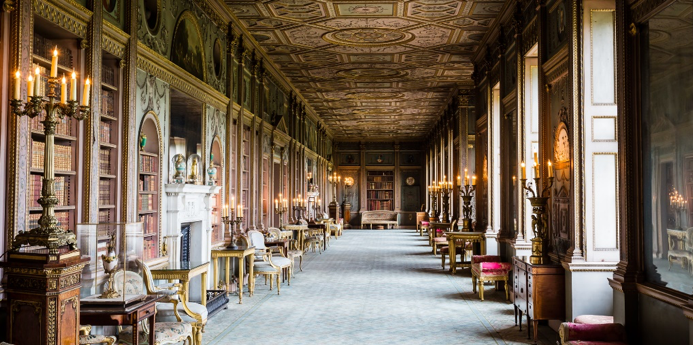
14 May Georgian interior design and the influence of The Grand Tour
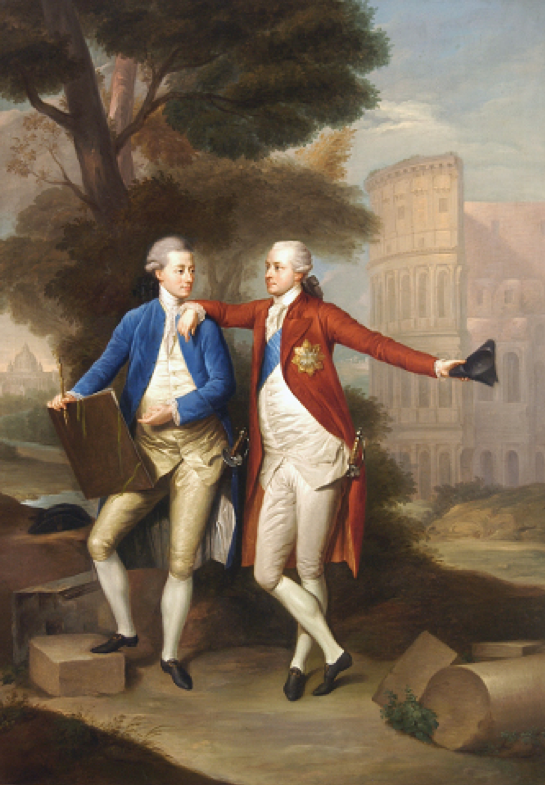
Brothers Francis and Kazimierz Rzewuscy in Rome, Anton von Maron 1772
In the Georgian period, the education of a young British gentleman of quality was not considered complete until he had accomplished the Grand Tour, a voyage of aesthetic discovery which concentrated on Italy and the ruins of classical antiquity. Many travellers filled sketchbooks with a record of their voyages, and sent or carried home quantities of objects to display in their homes. Many of these influences on Georgian interior design are used today by Etons of Bath in Georgian houses and hotels to ensure that the best is made of Georgian symmetry and proportions.
The Grand Tour had a profound influence on interior design in the Georgian period in which Etons of Bath specialise. In 1771, Gavin Hamilton, the 18thcentury archaeologist, painter and dealer in antiquities, wrote to Charles Townley, the antiquary and collector: “never forget that the most valuable acquisition a man of refined taste can make is a piece of fine Greek sculpture.
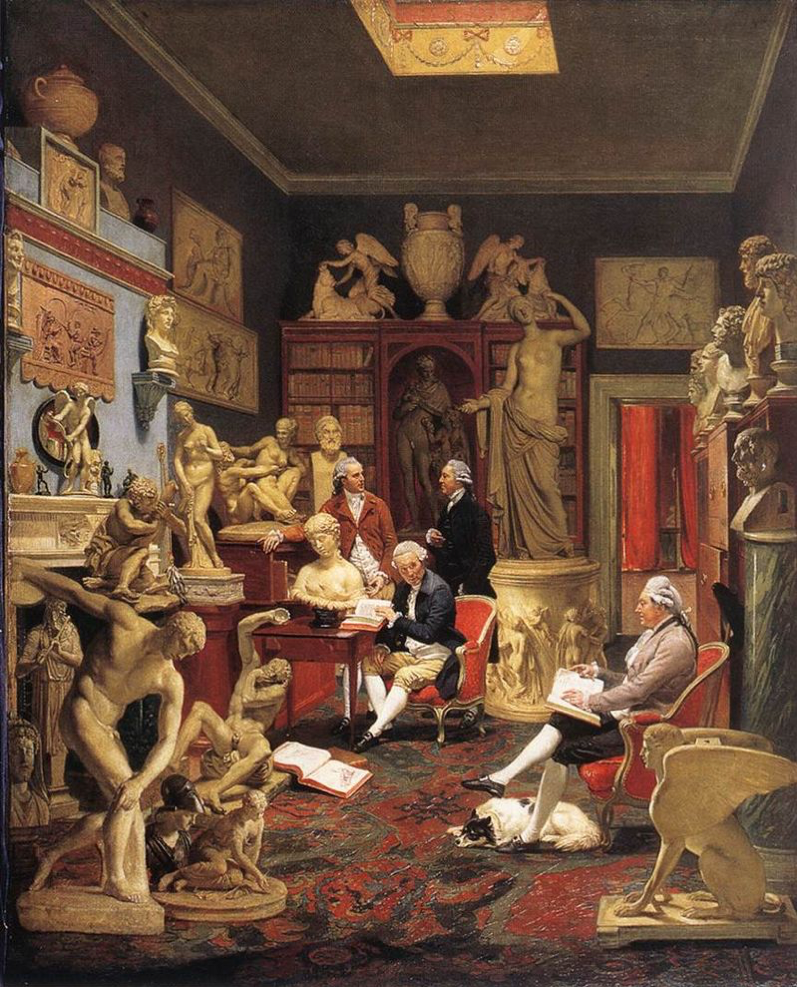
Zoffany’s painting of Townley
Zoffany’s painting of Townley shows him seated (right) with friends in the sculpture gallery of his house in Park Street, London, demonstrating that Townley evidently followed Hamilton’s advice. Townley had the house built for the specific purpose of housing his collection of classical sculpture, amassed during three tours of Italy, commissioning Samuel Wyatt, brother of the more famous James Wyatt, as architect.
Other examples of 18thcentury sculpture galleries include the Upper Cloister at Wilton House, Wiltshire, and the Pantheon at Ince Blundell Hall in Sefton, Merseyside. The gallery at Wilton was built by James Wyatt to show off the 8th Earl of Pembroke’s collection of Roman statuary, but curiously Wyatt chose to employ the Gothic revival style instead of the Neoclassical. More appropriately, Henry Blundell, a collector of paintings and antiquities, who accompanied his friend Townley on the Grand Tour, displayed his impressive collection in suitably Neoclassical surroundings. First in garden buildings or temples, and, on the arrival of “a flood of new statuary” in a gallery styled as a scaled-down replica of the Pantheon at Rome.
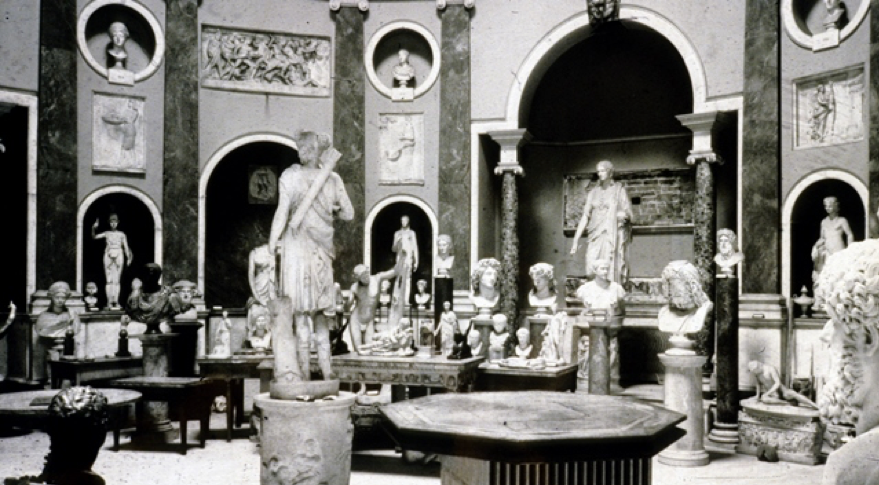
Sculpture in the Pantheon at Ince Hall
At Bowood House in Wiltshire, and at his London home Lansdowne House, William Petty, 1st Marquess of Lansdowne and Prime Minister of Great Britain from 1782 – 1783, displayed his extensive collection of paintings and classical sculpture. He was a passionate collector of antiquities and works of art and commissioned Robert Adam to design Lansdowne House and to carry out improvements at Bowood.
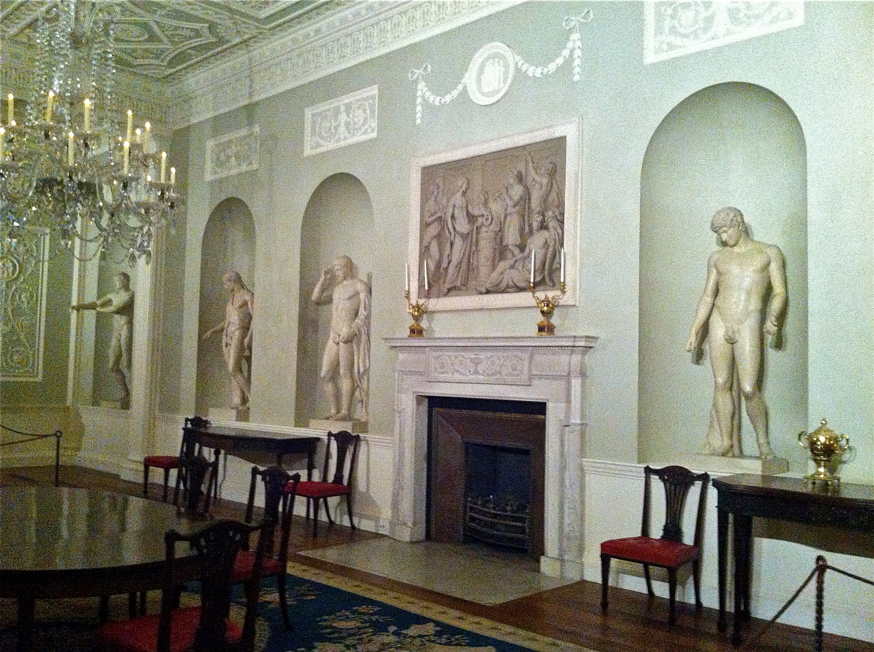
The Dining Room at Lansdowne House
The Dining Room at Lansdowne house was designed with niches to display nine ancient marble statues acquired by Lord Lansdowne in Italy from Gavin Hamilton. The room is now in the Metropolitan Museum of Art and the original statues have been replaced with replicas.
Adam also designed the Diocletian wing at Bowood, inspired by the Roman emperor Diocletian’s palace in Spalatum (Split), Croatia. This wing contained an orangery, and is now used as a gallery to display part of the Bowood statuary and art collection.
All the foremost architects of the period considered the Grand Tour an essential element of their training, and on their return created impressive work in the Neoclassical style. Soane’s Bank of England was inspired partly by the engravings of Piranesi, whom he had met in Rome, shortly before the artist’s death.
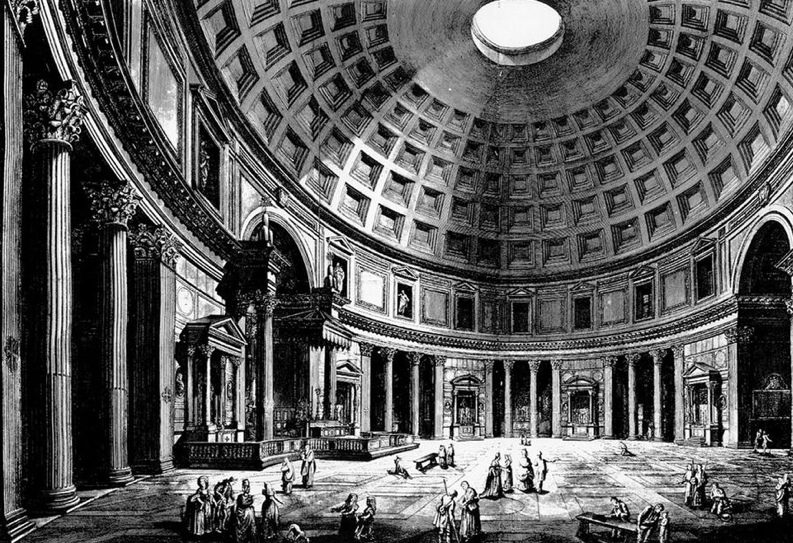
An engraving by Piranesi
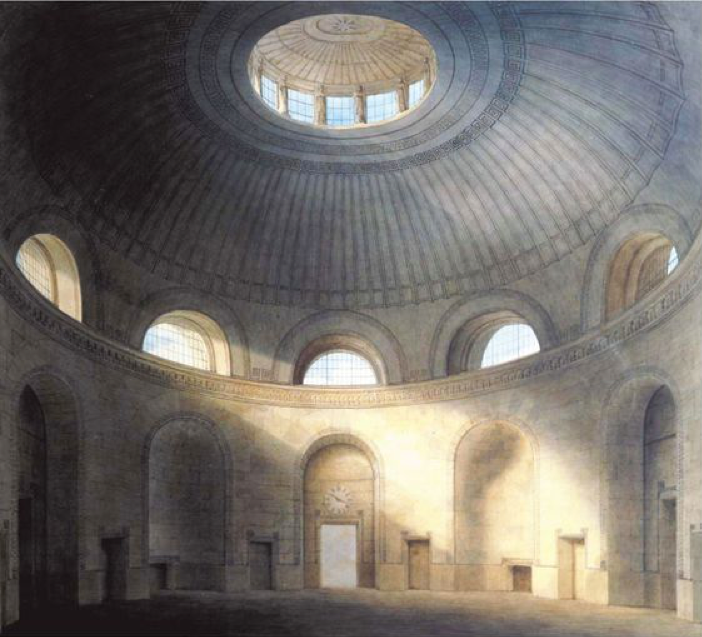
Sir John Soane, the Rotunda in the Bank of England, built between 1794 and 1796. (Drawing by Joseph Gandy)
Wyatt’s London Pantheon and Adam’s re-designing of Syon House, are outstanding examples of Neoclassical design inspired by their travels on the Grand Tour.
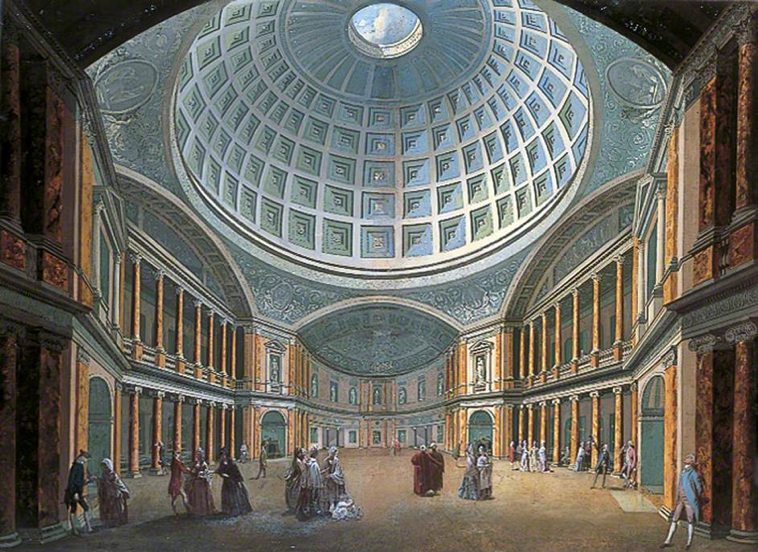
James Wyatt – The London Pantheon.
Adam’s superb work at Syon, the first on his return from the Grand Tour, is considered the first example of what has become known as ‘Adam style’. Commissioned by the 1st Duke and Duchess of Northumberland to construct ‘A palace of Graeco-Roman splendour’, Adam fulfilled the brief in breath-taking style. The imposing double cube entrance hall imitates a Roman atrium, with its classical statuary and black and white marble floor featuring a Greek key pattern. The impression is one of austere grandeur, its coolness emphasised by the dramatic contrast of a large black marble sculpture, ‘The Dying Gaul’ which dominates the room from its position at the top of the stairs that give entrance to the Ante Room. On entering this gilded and marbled chamber its splendour, colour and lavish use of gold come as a shock after the restraint of the entrance hall. Adam pulls out all the stops here, proving that Neoclassicism could be extravagant and flamboyant, not just restrained and elegant.
There is a legend attached to the twelve green columns that ring the Ante Room – it is alleged that some were dredged from the bed of the river Tiber and that the remainder were fashioned to match, in green scagliola, a type of imitation marble.
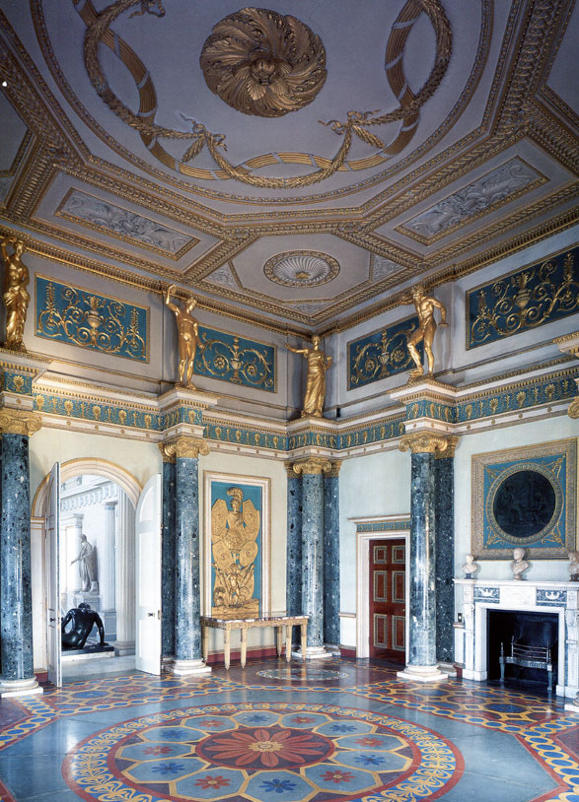
The Ante Room at Syon House
Although the 1stDuke had travelled on the Grand Tour and was one of the most important patrons of Canaletto in England, it would seem that perhaps he was more concerned with the creation of a grand interior scheme at Syon than he was with the quality of the antiquities he sought to display there. In his correspondence of 1765, with the British diplomat and antiquarian Sir William Hamilton in Naples, he requested the purchase of vases, urns or other pieces of statuary, to fit the precise dimensions of the proposed niches and circular recesses in the Long Gallery. These he specified to the nearest inch. Size, it appeared, was of greater importance than quality. In the end he had to settle for painted replicas and casts after the antique – a set of suitably proportioned antiquities presumably not being available!
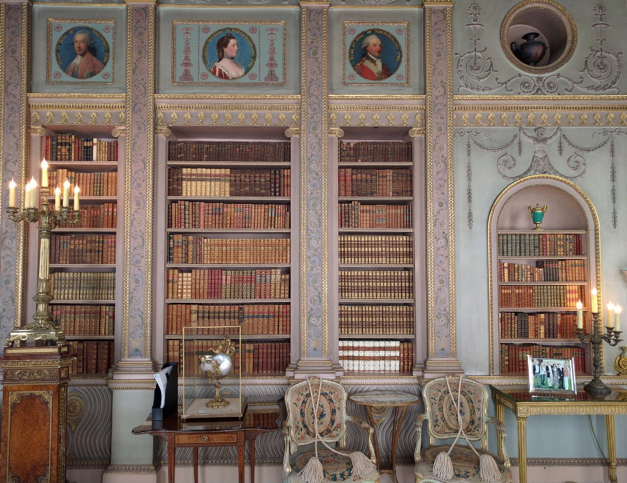
The Long Gallery, Syon House

The Long Gallery, Syon House
Nevertheless, the Long Gallery must rank amongst Adam’s finest works, in a house which showcases his dazzling skills as an interior designer (a term not then in use) to the full. Etons of Bath has worked on many of Bath and Bristol’s finest Georgian buildings where these influences can clearly be seen to this day.
The taste for the Neoclassical, which predominated in the styling of the Georgian interior, and derived from the habit of taking the Grand Tour, resulted in some exceptionally impressive interiors, not only in Britain, but across Europe, reaching as far as Scandinavia and Russia. Catherine the Great embraced the style and The Greek Hall at Pavlovsk Palace, St. Petersburg, with its green marble columns, perhaps owes its inspiration to Adam’s Ante Room at Syon House.
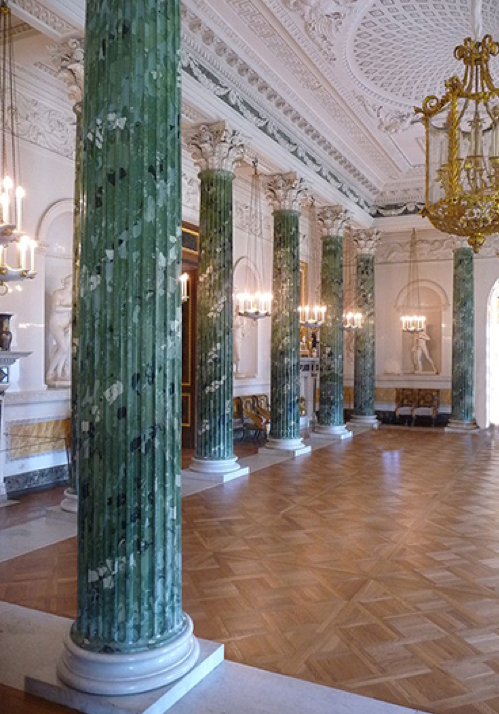
The “Greek Hall”, Pavlovsk Palace, St. Petersburg, by Vincenzo Brenna (1789)
Etons of Bath work exclusively on Georgian and Regency properties helping turn them into beautiful, classically inspired homes and hotels. Call us today on 01225 639002 to get some advice and help on your project. You can see our portfolio here.




Sorry, the comment form is closed at this time.